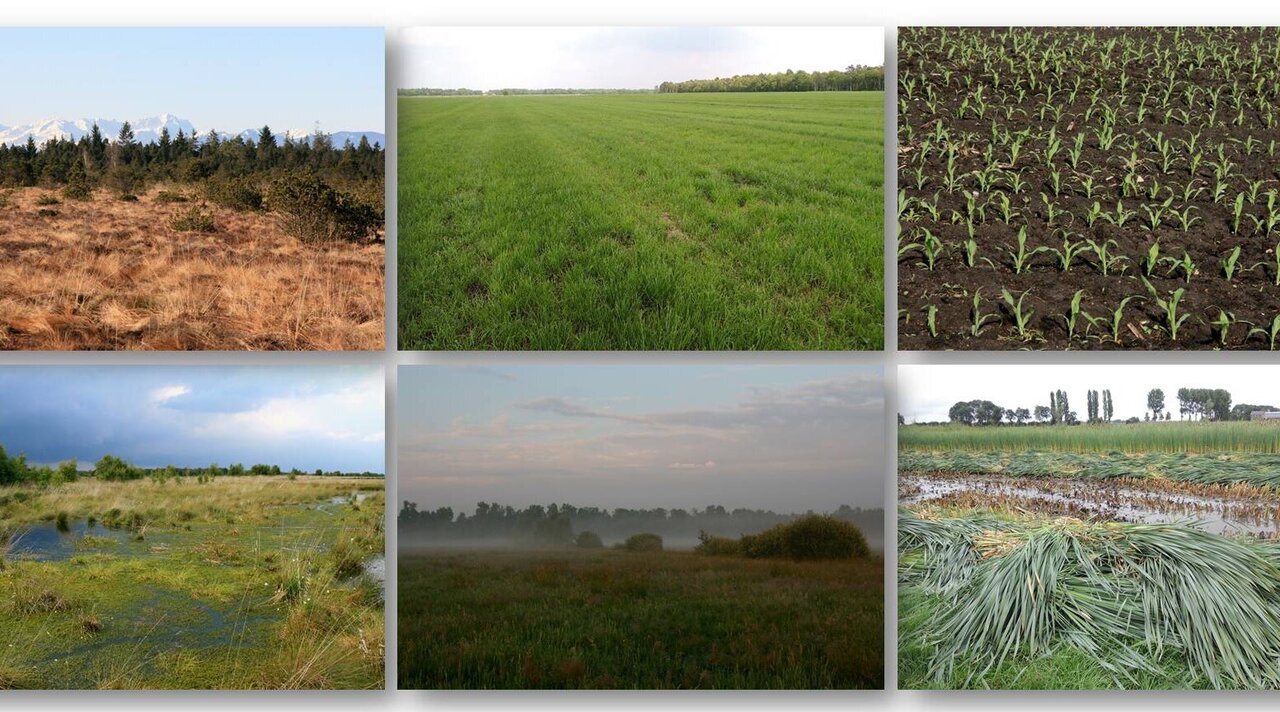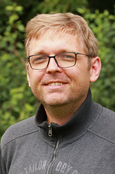Project
Peatland monitoring program for climate protection

Implementation of the German peatland monitoring program for climate protection
Peatlands store large amounts of soil organic carbon and are thus important for climate protection. A consistent monitoring program across Germany will be the basis for investigating changes in carbon stocks, important drivers and mitigation measures.
Background and Objective
Despite covering only around 5 % of the German land surface, drained peatlands and other organic soils contribute nearly 7% to Germany's greenhouse gas (GHG) emissions. Carbon dioxide (CO2) currently constitutes approximately 90 % of the total emissions.
Organic soils account for 6.7% of the the agricultural area, but contribute 44% to the GHG balance of the sector Agriculture and agriculturally used soils reported in the sector Land Use, Land Use Change and Forestry (LULUCF). In combination with the still remaining large stocks of soil organic carbon, organic soils are important for climate protection. However, the implementation of peatland protection measures as announced in the Climate Action Programme 2020 and Climate Action Plan 2050 will require an improved data basis. This includes not only the determination of the status quo, but also the evaluation of mitigation measures such as classical re-wetting, wet peatland use (“paludiculture”) or adjusted water management. Additionally, to meet the increasing demands on emission reporting, a development of dynamical models is needed. Thus, the peatland monitoring pursues the following goals:
- long-term, consistent and spatially representative assessment of CO2 emissions for the German emission inventory
- improved understanding of drivers and of the relationship between surface motion and changes in carbon stocks
- development of improved regionalisation approaches for drivers and CO2 emissions
- scenario development and evaluation of mitigation measures
Approach
Over millennia, living peatlands have slowly increased in height. The reverse and much faster process, i.e. the loss of peat from drained organic soils, is visible and measurable as subsidence of the soil surface. Subsidence is caused by different physical and biogeochemical processes (loss of buoyancy, shrinkage, and mineralisation), but only mineralisation causes CO2 emissions. Monitoring needs to distinguish these processes by not only measuring surface elevation on a regular basis, but also by identifying important drivers. These comprise, among others, information on the soil properties and the groundwater level which will be used to develop process-based models.
A measurement network of approximately 150 sites will be the core of the monitoring. Sites will be selected representatively with respect to peatland type (e.g. bog, fen) or land use (e.g. grassland, cropland, re-wetting). Furthermore, the integration of project sites testing mitigation measures as well as study sites of other monitoring programs will create synergies.
Besides gathering soil and hydrological data, the heart of the monitoring program are recurrent measurements of the surface elevation at different temporal and spatial scales. To distinguish physical and biogeochemical processes, a shrinkage model for organic soils will be parametrized and, after laboratory test, applied to field sites.
Regionalisation will comprise an update and a soil physical and chemical parametrization of the map of organic soils in Germany which is currently used in the emission inventory. Remote sensing approaches will be tested for the determination of surface movements and groundwater levels. Groundwater levels and, finally, changes in carbon stocks will be scaled up by statistical models.
Mitigation measures will be identified by a combination of remote sensing approaches and a compilation of dispersed databases. Using data measured at the site level, models applicable for scenario analysis will be developed for important peatland types and mitigation measures. Model results will be combined with spatial data to create CO2 emission maps and to estimate mitigation effects.
Results
Thünen-Contact

Involved Thünen-Partners
- Amiri, ElahehAK Institute of Climate-Smart Agriculture
- Bamberger, SaskiaAK Institute of Climate-Smart Agriculture
- Baumann, UlffAK Institute of Climate-Smart Agriculture
- Dettmann, UllrichAK Institute of Climate-Smart Agriculture
- Heidkamp, ArneAK Institute of Climate-Smart Agriculture
- Heller, SebastianAK Institute of Climate-Smart Agriculture
- Heyer, InesAK Institute of Climate-Smart Agriculture
- Holzträger, SylviaAK Institute of Climate-Smart Agriculture
- Kuwert, MalinaAK Institute of Climate-Smart Agriculture
- Lakeberg, SilvanaAK Institute of Climate-Smart Agriculture
- Laqua, SharonAK Institute of Climate-Smart Agriculture
- Minke, MertenAK Institute of Climate-Smart Agriculture
- Nagel, StefanAK Institute of Climate-Smart Agriculture
- Oehmke, SebastianAK Institute of Climate-Smart Agriculture
- Piayda, ArndtAK Institute of Climate-Smart Agriculture
- Rutsch, ManuelaAK Institute of Climate-Smart Agriculture
- Seidel, RonnyAK Institute of Climate-Smart Agriculture
- Simon, CarolinAK Institute of Climate-Smart Agriculture
- Tiemeyer, BärbelAK Institute of Climate-Smart Agriculture
- Viohl, ThomasAK Institute of Climate-Smart Agriculture
- Wywias, HolgerAK Institute of Climate-Smart Agriculture
Funding Body
-
Federal Ministry of Agriculture, Food and Regional Identity (BMLEH)
(national, öffentlich)
Duration
7.2019 - 5.2025
More Information
Project status:
finished
Publications
- 0
Seidel R, Dettmann U, Tiemeyer B (2025) Peatland surface motion : terminology, measurement approaches, models and insights from a global dataset. Ecohydrol 18(8):e70140, DOI:10.1002/eco.70140
- 1
Tiemeyer B, Frank S (2024) Methodische Anforderungen an die Ermittlung der Bodenkohlenstoffvorräte von Moor-Treposolen als Grundlage für die Bewertung ihrer Klimawirksamkeit. Telma 54:119-136
- 2
Wittnebel M, Frank S, Tiemeyer B (2023) Aktualisierte Kulisse organischer Böden in Deutschland. Braunschweig: Thünen-Institut für Agrarklimaschutz, 2 p, Project Brief Thünen Inst 2023/25, DOI:10.3220/PB1683114247000
- 3
Wittnebel M, Frank S, Tiemeyer B (2023) Aktualisierte Kulisse organischer Böden in Deutschland. Braunschweig: Johann Heinrich von Thünen-Institut, 78 p, Thünen Working Paper 212, DOI:10.3220/WP1683180852000
- 4
Wittnebel M, Frank S, Tiemeyer B (2023) Aktualisierte Kulisse organischer Böden in Deutschland [Datenpublikation] [online]. 1 Geopackage, 16 CSV-Dateien, 3 PDF-Dateien, 2 PNG-Dateien, 1 TXT-Datei. Göttingen: Open Agrar Repositorium, zu finden in <https://www.openagrar.de/receive/openagrar_mods_00087123> [zitiert am 30.06.2023], DOI:10.3220/DATA20230510130443-0
- 5
Seidel R, Dettmann U, Tiemeyer B (2023) Reviewing and analyzing shrinkage of peat and other organic soils in relation to selected soil properties. Vadose Zone J 22(5):e20264, DOI:10.1002/vzj2.20264
- 6
Tiemeyer B, Dettmann U, Piayda A, Frank S (2022) Aufbau eines deutschlandweiten Moorbodenmonitorings für den Klimaschutz (MoMoK) - Teil 1: Offenland. Braunschweig: Thünen-Institut für Agrarklimaschutz, 2 p, Project Brief Thünen Inst 2022/38, DOI:10.3220/PB1667294290000
- 7
Tiemeyer B, Dettmann U, Piayda A, Frank S (2022) Establishment of a German peatland monitoring programme for climate protection (MoMoK) - Part 1: Open Land. Braunschweig: Thünen Institute of Climate-Smart Agriculture, 1 p, Project Brief Thünen Inst 2022/38a, DOI:10.3220/PB1667294659000
- 8
Dettmann U, Frank S, Wittnebel M, Piayda A, Tiemeyer B (2022) How to take volume-based peat samples down to mineral soil? Geoderma 427:116132, DOI:10.1016/j.geoderma.2022.116132
- 9
Frank S, Dettmann U, Heidkamp A, Piayda A, Oehmke W, Tiemeyer B (2022) Methodenhandbuch zu den Gelände- und Laborarbeiten für den Aufbau des deutschlandweiten Moorbodenmonitorings für den Klimaschutz (MoMoK) – Teil 1: Offenland, Version 1.0. Braunschweig: Johann Heinrich von Thünen-Institut, 111 p, Thünen Working Paper 199, DOI:10.3220/WP1661764883000
- 10
Dettmann U, Kraft NN, Rech R, Heidkamp A, Tiemeyer B (2021) Analysis of peat soil organic carbon, total nitrogen, soil water content and basal respiration: Is there a ‘best’ drying temperature? Geoderma 403:115231, DOI:10.1016/j.geoderma.2021.115231
- 11
Wittnebel M, Tiemeyer B, Dettmann U (2021) Peat and other organic soils under agricultural use in Germany: Properties and challenges for classification [online]. Mires Peat 27:19, zu finden in <http://mires-and-peat.net/modules/download_gallery/dlc.php?file=405&id=1628187927> [zitiert am 11.08.2021], DOI:10.19189/MaP.2020.SJ.StA.2093

![[Translate to English:] [Translate to English:]](/media/_processed_/6/4/csm_titel_CO2Kampagne8_afeea2273e.png)
![[Translate to English:] [Translate to English:]](/media/_processed_/4/1/csm_titel_93px_CO2Kampagne8_9b0f3354d4.png)





